Vermeer’s painting techniques in regards to surfaces
One of the most important aspects in Vermeer’s painting techniques is the surface he used. Out of Vermeer’s 35 surviving works only two of them are painted on oak (oil on oak). The rest are all painted on canvas. The ancients knew about canvas as a painting surface but it was not widely used for painting until the end of the 15th century. Canvas has several advantages over wood panels – one of them being that it is transportable. For example, the worlds largest known painting ‘The Wedding at Cana’ by Paolo Veronese measures 262 in x 390 in. Imagine trying to fit that through a doorway if it were on an oak panel!
In Vermeer’s time painters were aware how the color of the ground (surface they painted on) influenced the perception of the tones and hues that they would apply to it. A tinted ground acts as a middle ground when applying paint. It helps to give a cohesive look to your painting – making it look more whole while you paint. Part of discovering how to paint like Vermeer is knowing the colors he used in his base. Vermeer typically used neutral or warm light grey colors as did many other Dutch painters of his time, such as Rembrandt. Although Vermeer, is known to have used a white ground once in particular, as well as a strong reddish color in his ‘The Love Letter’.
Vermeer’s initial drawing technique
For another one of Vermeer’s painting techniques, he would make an initial drawing directly on the canvas before painting. In 17th Century Netherlands this stage would be called ‘inventing’. Today, we just refer to it as ‘drawing’. The drawing would be applied on top of the underpainting and either charcoal or very light paint would be used to set down the large basic shapes of the paintings.
Unfortunately, no drawings exist today from Vermeer. However, upon close inspection, a photomicrograph of the ‘Woman Holding a Balance’ reveals a sketch line along the contours of the figures forearm. It appears he applied ‘delicate lines with deliberation’, we can see small areas of drawing on some of his paintings. Therefore, we can imagine this initial drawing stage was applied with great care and thought.
Vermeer’s painting techniques applied to his underpainting
An underpainting is basically a monochrome version of what the completed painting will look like. It is an economical way for an artist to envision the totality of their painting while still being able to correct defective parts with ease. With an underpainting the artist creates their composition as well as the light and dark values so as to make sure that the painting has proper illumination.
Creating an underpainting was a fundamental piece in Vermeer’s painting techniques and painting process. It appears that the artist would make many changes during the underpainting process. Sometimes moving objects figures and reconfiguring dimensions of things. He would sometimes wipe out things altogether during the underpainting process if they would not contribute to the desired effect Vermeer sought.
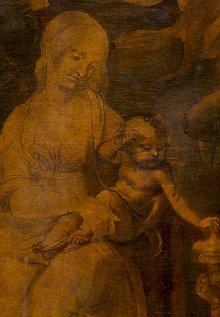
Vermeer’s working up method or ‘body color’
When it came to applying paint, Vermeer’s painting technique was very different than most artists today. In Vermeer’s time, a painter would work on only one area at a time. So, for example, they would only work on one corner of a painting and finish that area before moving to the next part of the painting. They did not have tubed paint as we do today. Instead, they would have to grind up new paint every day to use. Grinding paint was a time consuming process. So naturally they limited the number of pigments they would need to grind, by limiting themselves to working on specific areas of their painting, a day at a time.
When inspecting his paintings to find out which colors Vermeer used as well as other artists from the same time period, we can see that they used a very limited range of pigments (as seen in image below). The next day they might move to a different area and grind up different pigments. This method of working has been replaced with Alla Prima painting in today’s age.
If you haven’t yet – Grab my FREE Color Mixing Guide for help with color mixing techniques for your own painting!
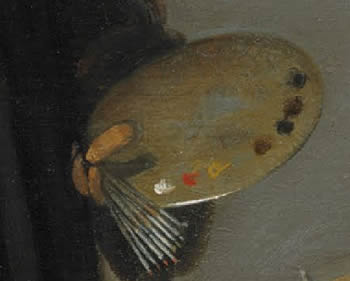
We cannot say with certainty in which order Vermeer worked. However, some evidence leads us to think that Vermeer, as part of his painting technique, would start with the background of his paintings before painting in his foregrounds and figures. This is because more than any other element in a painting, the walls determine the type and quality of light that will be present in a painting. Therefore, when starting with the walls first Vermeer would know how to treat the rest of the painting.
Vermeer’s painting technique of utilizing glazing
The technique of glazing has been used since the invention of oil painting itself. Glazing is when a thin, transparent layer of paint is applied on top of an opaque layer of paint that is dry. This technique can create a ‘shine through’ stained glass type of effect.
In Vermeer’s time, bright colors were not readily available. Glazing provided the opportunity to create more brilliant colors. Strong purples were rare, so, painters would often glaze a blue color over a reddish underpainting to achieve a purple hue (or vice versa). A good example of glazing in Vermeer’s painting technique can be seen in ‘The Milkmaid’. There is a gem like depth present – the depth created because of the transparent quality of the lapis lazuli glazed over the underpainting.
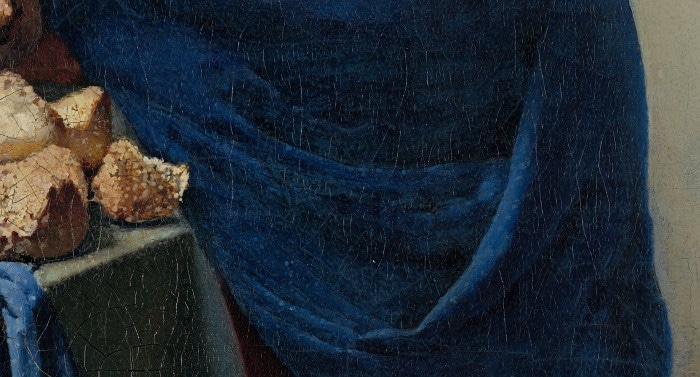
Resources I Enjoy On Vermeer
This is a beautiful oversize volume of Vermeer’s complete works. Looking at this book is the next best thing after seeing Vermeer’s works in person. The level of quality of the prints is astonishing. And it is chock full of many details of Vermeer’s works. Truly, a must have for anyone who loves his artwork, or wishes how to learn to paint like Vermeer.
This book provides a fantastic overview of Vermeer’s work. It gives a summary of each work while also focusing in on details of paintings.

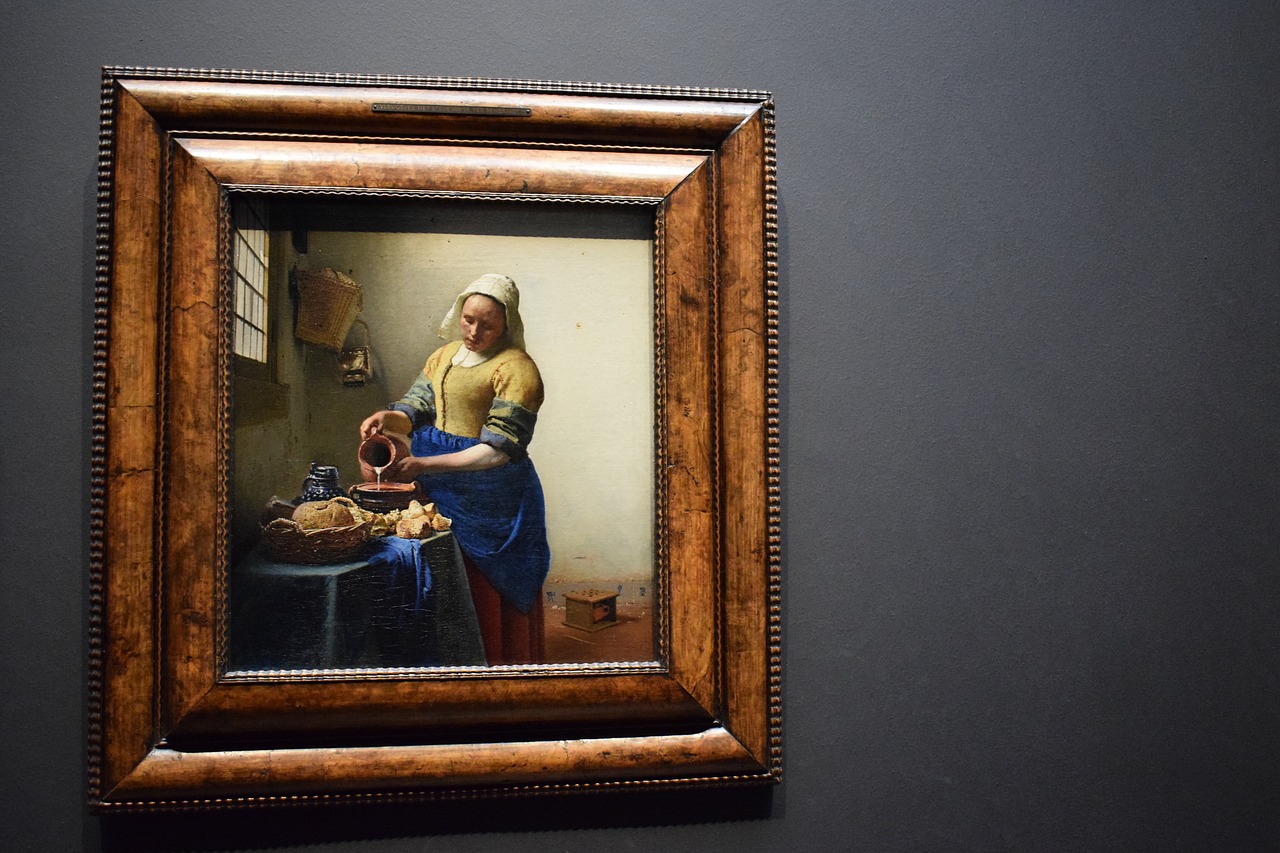

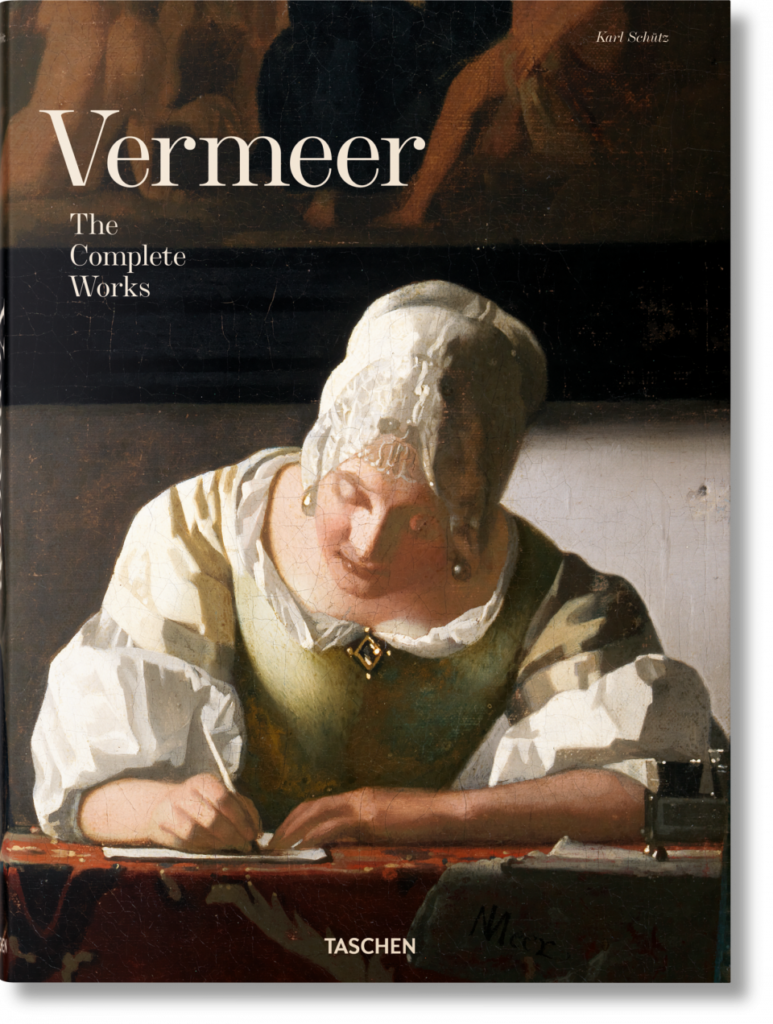
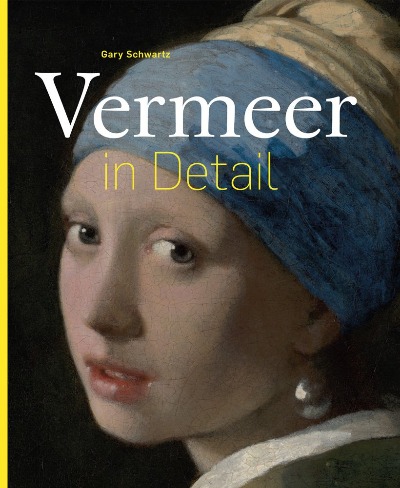


4 thoughts on “Vermeer’s Painting Techniques”
Vermeer is my favourite artist. I have painted the Milkmaid and the Love Letter in oils and pastel pencils. Thank you for your informative read.
That is wonderful! I am glad this was an informative and helpful read. Thank you for sharing!
You are mistaken with the assertion that artists would work on one area at a time. No one does that. The whole painting has to come together with all of the parts developed. If you work on one area at a time. The painting will look like more than one person painted it.
Back in Vermeer’s time they were limited with the type of materials they had available to them. Certain paints dried faster than others and if they did not work in a particular way it would have negative effects on their painting. Research done by art historians clearly has evidence that many worked on certain areas at a time. Also, looking at some unfinished paintings from the past shows this plainly as well. Now today we paint everything together at once – this is very true. Our materials allow it – this is how I paint for the most part. However this is not always been the case throughout the history of painting.